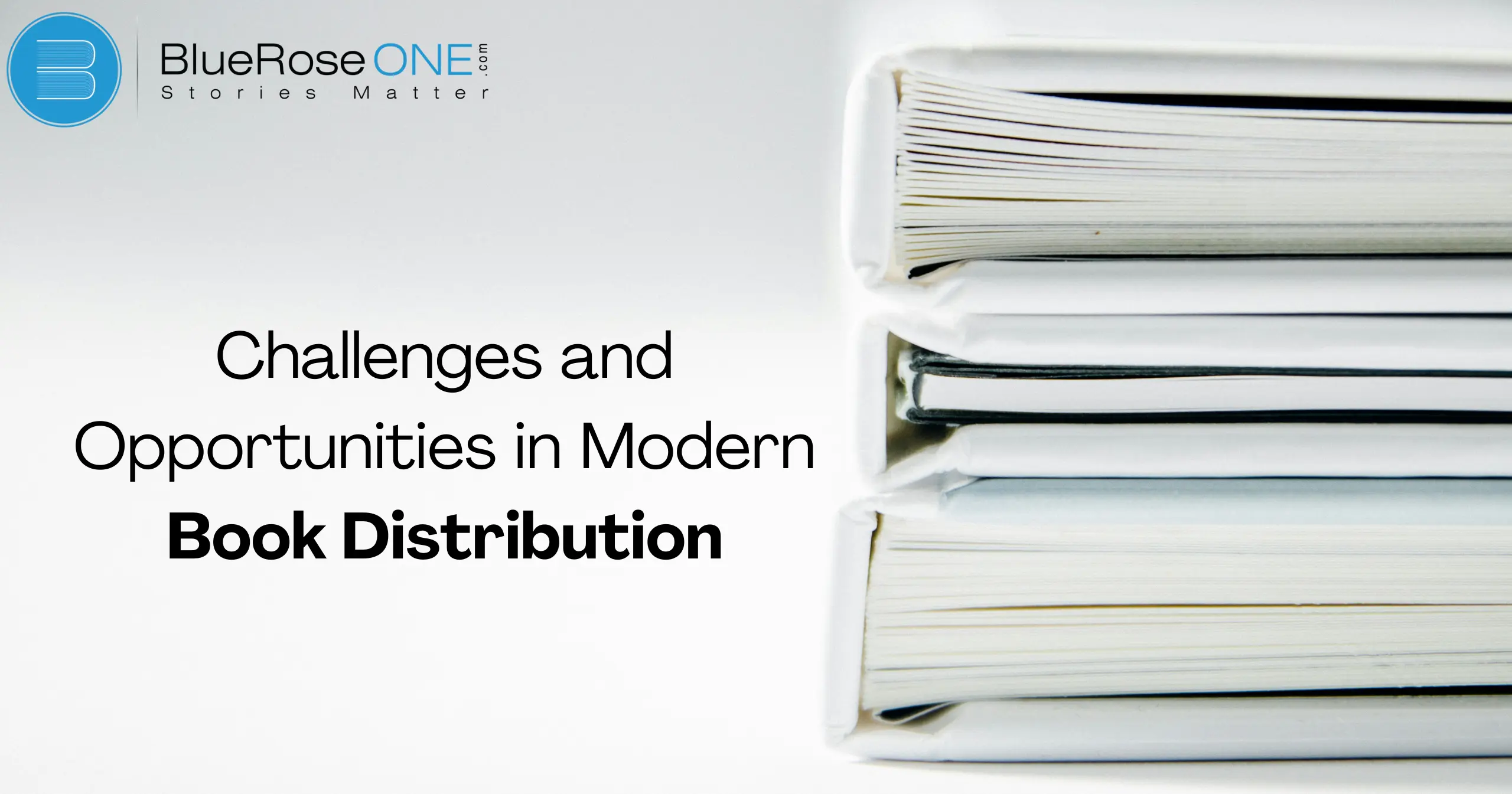The book distribution environment has changed significantly in the current digital era. There are now many digital platforms and online shops in addition to the conventional ways of book distribution through physical storefronts. The difficulties and possibilities brought about by these adjustments are examined in this essay.
Challenges in Modern Book Distribution
Competition from Online Retailers
One of the biggest obstacles in the current distribution market is the intense competition from internet sellers. The rise of digital platforms and e-commerce behemoths has made it harder for traditional brick-and-mortar bookstores to stay in business.
Because online buying is so convenient and offers a wide selection of titles at your fingertips, more and more consumers are choosing to shop online. In order to stay relevant in a market that is changing quickly, distributors must adjust their strategy in response to this transformation.
In order to successfully navigate this competitive landscape and guarantee the ongoing vitality of book distribution in the digital age, it is imperative that novel technologies be embraced, data analytics be utilized, and strategic alliances be fostered.
Logistics and Transportation Issues in Book Distribution
Modern logistics and transportation present both considerable opportunities and challenges in the distribution space. A careful balance between speed, economy, and environmental sustainability is necessary to deliver books from publishers to readers in an efficient and sustainable manner.
The emergence of online purchasing and the growth of e-commerce behemoths have made traditional brick and mortar bookstores extremely competitive. In order to optimise the distribution process, from warehouse to last-mile delivery, this dynamic terrain calls for creative solutions.
Using cutting edge technologies such as automated warehouses and route optimisation software can boost productivity and cut expenses, guaranteeing that books are delivered to eager customers at a reasonable price.

Opportunities in Modern Book Distribution
Digital Distribution Platforms
Digital distribution systems have transformed book distribution in the ever-changing publishing industry, providing never-before-seen prospects for both publishers and writers. These platforms function as online markets that link authors with a diverse worldwide readership.
Authors can now transcend the boundaries of time and geography by connecting with readers on different countries with only a click of a mouse. Furthermore, independent writers can now compete on an even playing field with big publishing organizations thanks to digital distribution networks.
These platforms provide a wide range of formats, including audiobooks and ebooks, to meet the varied tastes of modern readers. Accepting these platforms opens up a world of opportunities for writers trying to make their way through the ever-changing landscape of contemporary book distribution.
Direct-to-Consumer Models
Direct-to-consumer approaches provide publishers and authors a new path in today’s book distribution scenario. Through direct communication with readers, authors can establish stronger relationships than through traditional intermediaries like internet retailers or physical bookstores.
This gives you more control over pricing and marketing tactics in addition to streamlining the distribution process. Personalized interactions and customized experiences are made possible by utilizing direct-to-consumer channels, which promotes increased engagement and brand loyalty.
Adopting these approaches can transform the way books are read in the increasingly digital world, bringing about a dramatic change in the publishing industry’s dynamics.
Global Reach through Online Channels
The book distribution industry has changed significantly in the current digital era, providing writers and publishers with hitherto unseen chances to increase their worldwide reach through internet platforms. The entry hurdles have drastically decreased with the introduction of social media, digital publication platforms, and e-commerce platforms.
Thanks to these methods, authors can now reach readers around the globe and beyond regional boundaries with their publications. This change offers a more efficient and economical way to distribute books in addition to reaching a larger audience.
By embracing these digital channels, authors can open up new opportunities for success in the digital marketplace and gain the tools they need to overcome the current obstacles associated with book distribution.

Technological Advancements in Book Distribution
Role of AI and Data Analytics
Modern book distribution is undergoing a revolution thanks to technology improvements, with artificial intelligence (AI) and data analytics playing key roles. Distributors can now obtain profound insights into consumer behavior, tastes, and market trends thanks to these technologies.
Distributors can predict demand trends, optimize supply chains, and expedite inventory management by utilizing AI algorithms. Distributors can now better personalize their offerings to readers’ changing demands thanks to data analytics, which also improves decision-making processes.
Utilizing AI and data analytics is essential for maintaining competitiveness and optimizing book distribution efficiency in a time when digital platforms rule the market.
Automation in Inventory Management
Technological developments have transformed inventory management in the ever-changing book distribution landscape, transforming the industry’s efficiency and scalability. Automation is essential since it streamlines the entire process, from ordering to delivery.
Using AI-powered algorithms and advanced inventory management systems, book distributors can reduce waste, forecast demand swings, and maximize stock levels. Decision-makers are better able to plan ahead thanks to real-time data analytics, which guarantees that the appropriate books are available on the shelves at the appropriate times.
Adopting automation increases client satisfaction by guaranteeing timely delivery of needed titles and improves operational agility. Utilizing automation in this digital age is not only a wise decision, but also essential to maintaining competitiveness in the quick-paced book distribution industry.
Enhanced Customer Targeting and Personalization
Modern book distribution has changed dramatically as a result of technology breakthroughs, changing how publishers interact with their readership. In the current digital era, improved client targeting and personalisation are essential tactics.
With the use of advanced data analytics and AI-powered algorithms, publishers can now explore the preferences, behaviours, and demographics of their audience in great detail. This makes it possible to create customised marketing strategies that suggest the ideal book to the ideal reader at the ideal moment.
Book distributors may increase consumer happiness and loyalty by utilising personalised recommendations and targeted messaging, which will ultimately lead to growth and success in the fiercely competitive book distribution business.

Changing Consumer Behavior in Book Distribution
Preference for E-books and Audiobooks
The shift in consumer preferences towards e-books and audiobooks in the context of contemporary distribution offers both opportunities and obstacles. Since the emergence of digital platforms, readers have come to value the accessibility and ease that electronic media provide.
With only a click of a button, e-books eliminate the need for physical storage space and offer rapid access to a sizable library. In a similar vein, audiobooks accommodate the mobile lifestyle by enabling listeners to read while multitasking.
Traditional book distributors must adjust their tactics to meet the growing demand for digital content while also taking advantage of the chance to investigate new distribution channels.
Demand for Diverse and Inclusive Content
The need for inclusive and diverse content is a key component influencing consumer behaviour in the current book distribution ecosystem. Publishers and distributors confront both possibilities and challenges as readers grow more aware of representation and authenticity in the books they read.
Embracing diversity is a reflection of changing reader demographics as well as ethical imperatives. In order to ensure that a wide range of voices and experiences are represented on book shelves and digital platforms alike, publishers and distributors must adapt.
To fulfil the changing requirements of readers and enhance the literary scene, it is imperative to take a proactive strategy in navigating this demand by utilising varied perspectives.
Shift towards Sustainability and Eco-friendly Practices
The distribution of books is changing dramatically as consumers become more conscious of sustainability and environmentally friendly techniques. Publishers and distributors are adopting more ecologically friendly practices, such as using recycled materials for packaging and using carbon-neutral transportation.
This change is a reflection of consumers’ increasing consciousness about environmental issues as well as a rare chance for the book distribution sector to mirror the ideals of ethical shoppers. Book distributors that put an emphasis on sustainable methods can both lessen their environmental impact and draw in eco-aware consumers who are looking for products that share their beliefs.
Adapting to Industry Trends in Book Distribution
Embracing Hybrid Publishing Models
It is now essential for publishers and authors alike to embrace hybrid publishing strategies in the quickly changing publishing landscape of today. The conventional means of book distribution are changing dramatically as we move through the digital era. In order to effectively reach readers, it is necessary to explore novel pathways in response to industry developments.
By combining traditional and self-publishing methods, hybrid publishing models provide authors more control over their work while utilising the existing channels’ vast distribution networks.
Authors and publishers have a symbiotic relationship that creates a dynamic ecosystem that supports innovation and pushes the boundaries of efficiency and accessibility in book distribution.
Addressing Issues of Accessibility and Affordability
It is critical for industry participants to address accessibility and affordability challenges in the ever-changing landscape of contemporary book distribution. The methods that readers interact with content are always changing along with technology.
Making books available to people with different origins and financial resources is not only a strategic need, but also a moral obligation. In addition to increasing their reach, publishers and distributors can lower the cost of literature and increase its accessibility by adopting creative distribution models and utilising digital channels.
This proactive strategy not only tackles the problems of today, but it also opens up new avenues for growth and relevance in the dynamic field of book distribution.
Innovating in the Area of Print-on-demand Services
Book distribution is at the forefront of innovation in the quickly changing publishing industry of today. Print-on-demand services have changed the game by providing writers and publishers with a level of flexibility and efficiency never seen before.
The conventional book distribution model is revolutionised by utilising this technology. In order to reduce waste and increase profit margins, publishers can now generate books as they are ordered, rather than printing and storing enormous amounts of books.
This flexibility creates new opportunities for self-publishing writers and niche markets to flourish in addition to cutting overhead expenses. The distribution of books is expected to be dynamic and inclusive in the future as long as the industry adopts these innovations.
Final Thoughts
Publishers, distributors, writers, and readers all face opportunities and challenges as the book distribution industry rapidly changes. The publishing industry can continue to connect readers with the stories that matter most while navigating the challenges of modern book distribution by embracing shifting consumer behaviours, harnessing technology breakthroughs, promoting teamwork, and responding to industry trends.
If you have a dream to publish your book and want to make it available to the world, Well BlueRose Publishers can help you fulfill your dream.
Frequently Asked Questions
E-commerce has posed significant challenges to traditional bookstores, leading to closures and consolidation within the industry. However, some independent bookstores have found success by offering curated selections, hosting community events, and embracing online sales channels.
Social media platforms offer publishers and authors valuable opportunities to engage with readers, build brand awareness, and promote books through targeted advertising, influencer partnerships, and interactive content.
Streamlining distribution processes, adopting agile supply chain strategies, and implementing efficient warehousing and fulfillment solutions are key strategies for enhancing supply chain efficiency in book distribution.
Authors are increasingly embracing direct-to-consumer models, leveraging social media platforms to connect with readers, and exploring innovative publishing options such as hybrid publishing models and self-publishing platforms.
Emerging technologies like blockchain and NFTs have the potential to revolutionize the way books are distributed, offering increased transparency, security, and monetization opportunities for authors and publishers.
















